7 Essential Split System Maintenance Tips for Melbourne Homes
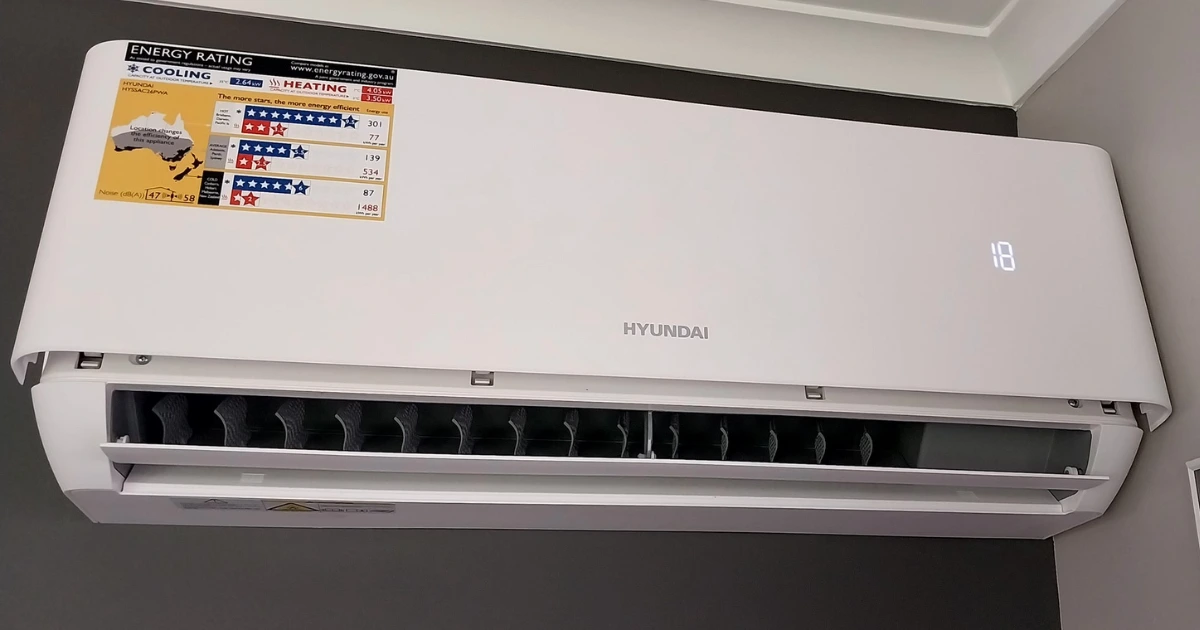
Split systems are the most widespread air conditioner in Melbourne.
You’ll see them in almost every apartment, unit, and home throughout the suburbs, due to their reliability, capability to provide heating and cooling, and their ease of use.
One simple solution keeps you from freezing during winter and boiling during summer.
That’s why you need to care for your system.
After continual year-round usage split systems are bound to run into problems without regular maintenance.
Think of them like a reliable Holden Commodore, if you take care of it, it can last a long time.
Not only is it important for longevity, but the efficiency of the unit and clear, quality air flow.
We’re going to break down the 7 practical tips that any Melburnian can do, and when it’s time to call in the professionals.
Key Takeaways
- Clean your filters often so the air stays fresh and your split system doesn’t have to work overtime.
- Keep the outdoor unit clear of leaves and dust so it can breathe and cool properly.
- Get a yearly service to catch problems early and keep your air con running strong all year.
Contents
- 1 What Is a Split System and Why Maintenance Matters
- 2 Clean or Replace the Air Filters Regularly
- 3 Keep the Indoor Unit Dust-Free
- 4 Check the Outdoor Unit and Clear Around It
- 5 Use the Self-Cleaning or Dry Mode
- 6 Check for Drain or Coil Build-Up (Visually Only)
- 7 Switch It Off When Not in Use
- 8 Book a Professional Service Every Year
- 9 Signs Your Split System Needs Attention
- 10 Professional Air Conditioning Service With Thomas Air Conditioning
What Is a Split System and Why Maintenance Matters
Split systems aren’t actually rocket science, they’re a type of air conditioner that includes an indoor and outdoor unit.
Most likely when you think of split air cons, you picture those units hanging off the wall near the ceiling; that’s your indoor unit which is connected via wiring and insulated pipes to an outdoor unit.
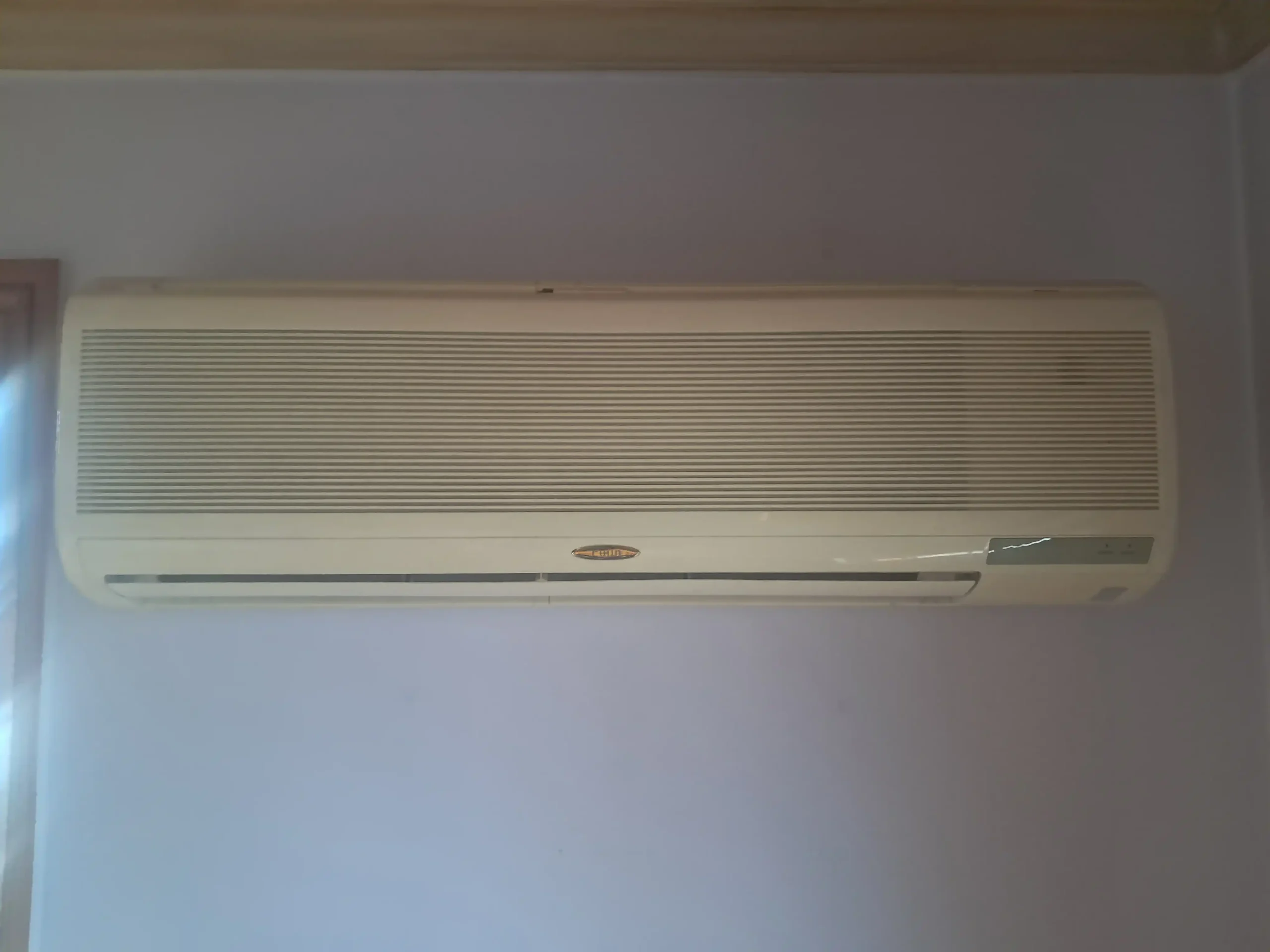 The outdoor unit is usually fixed to the floor or wall closest to the indoor unit.
The outdoor unit is usually fixed to the floor or wall closest to the indoor unit.
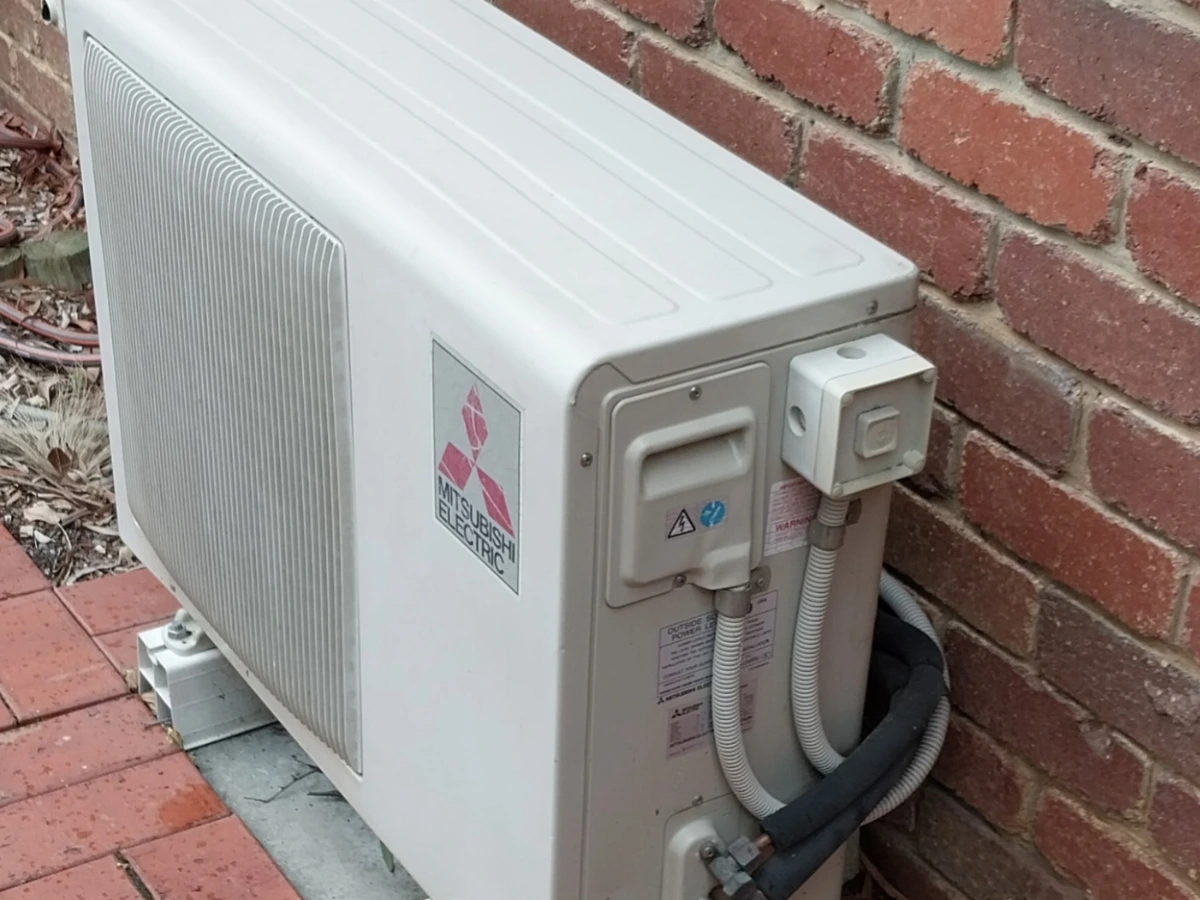 Split systems are one of the easiest air conditioners to install while providing heating and cooling.
Split systems are one of the easiest air conditioners to install while providing heating and cooling.
However the benefits of split systems can quickly dissipate when they don’t get the proper care.
After brutal summers and harsh winters in Melbourne, maintenance is what keeps them running smoothly.
When the filters are blocked, drainage is leaking, and coils are clogged, the system performs poorly and is prone to dysfunction and issues.With that said, let’s get straight into the 7 essential tips you can do right now to improve your system.
Clean or Replace the Air Filters Regularly
Split system filters are super important to keep clean as they trap nasty particles from entering into your home.
It’s imperative to regularly change your air conditioner filters to maximise the air quality and not circulate dust and other toxins throughout the home.
A clogged filter with dust will cause the system to not output the right amount of air flow potentially causing overheating and overuse.
If you’re using your split system every day then we recommend replacing your filters every 3 months.
Cleaning the filters is also necessary and highly recommended.
It’s a great way to perform maintenance on your split system every month.
This is something all homeowners can do.
To take the filters out you need to open the front panel, and once opened, you will see the two filters on each side.
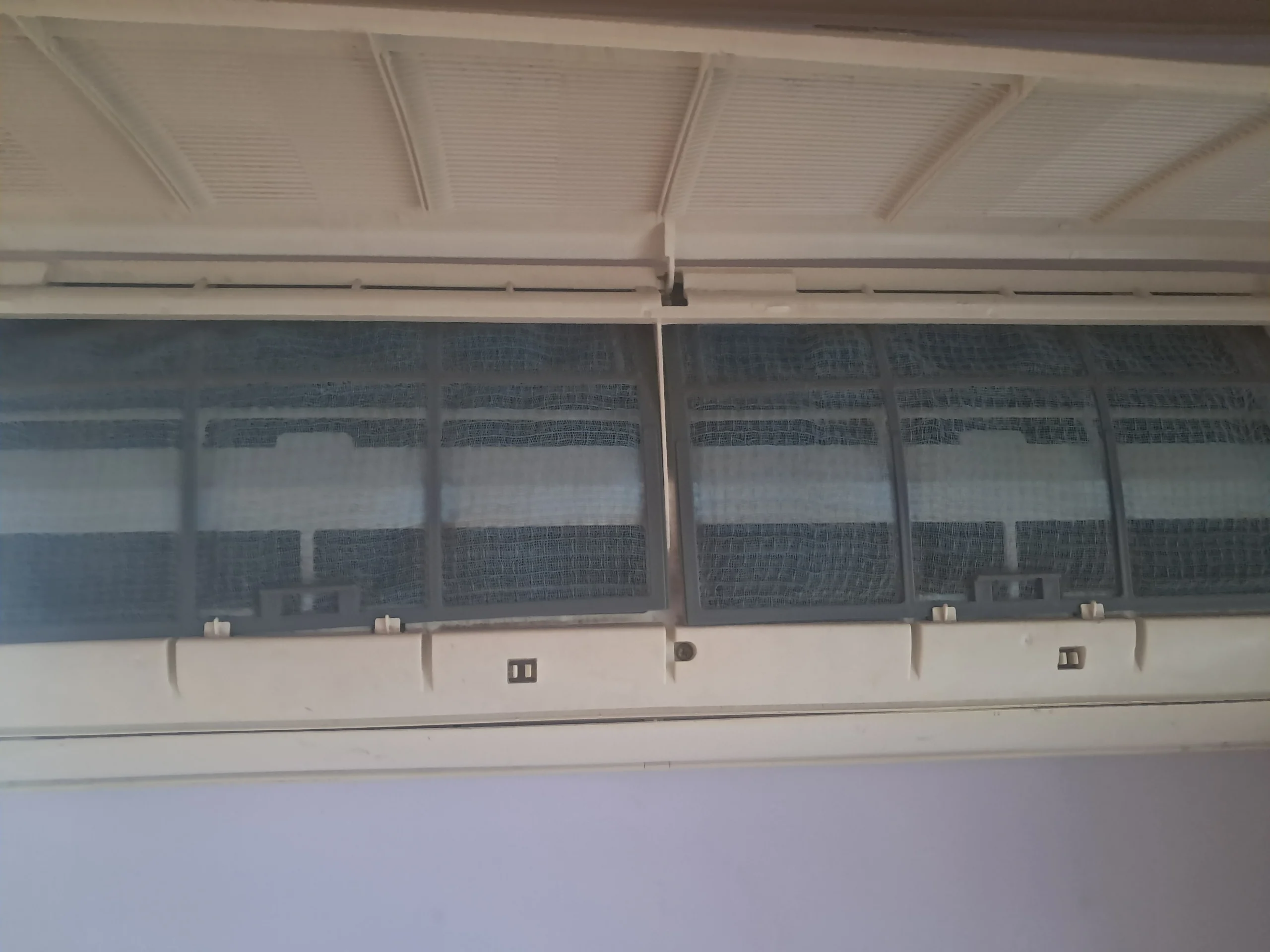 Pull them out gently to avoid bending or damaging them.
Pull them out gently to avoid bending or damaging them.
After that, vacuum them, wipe them down with soapy water and dry them.
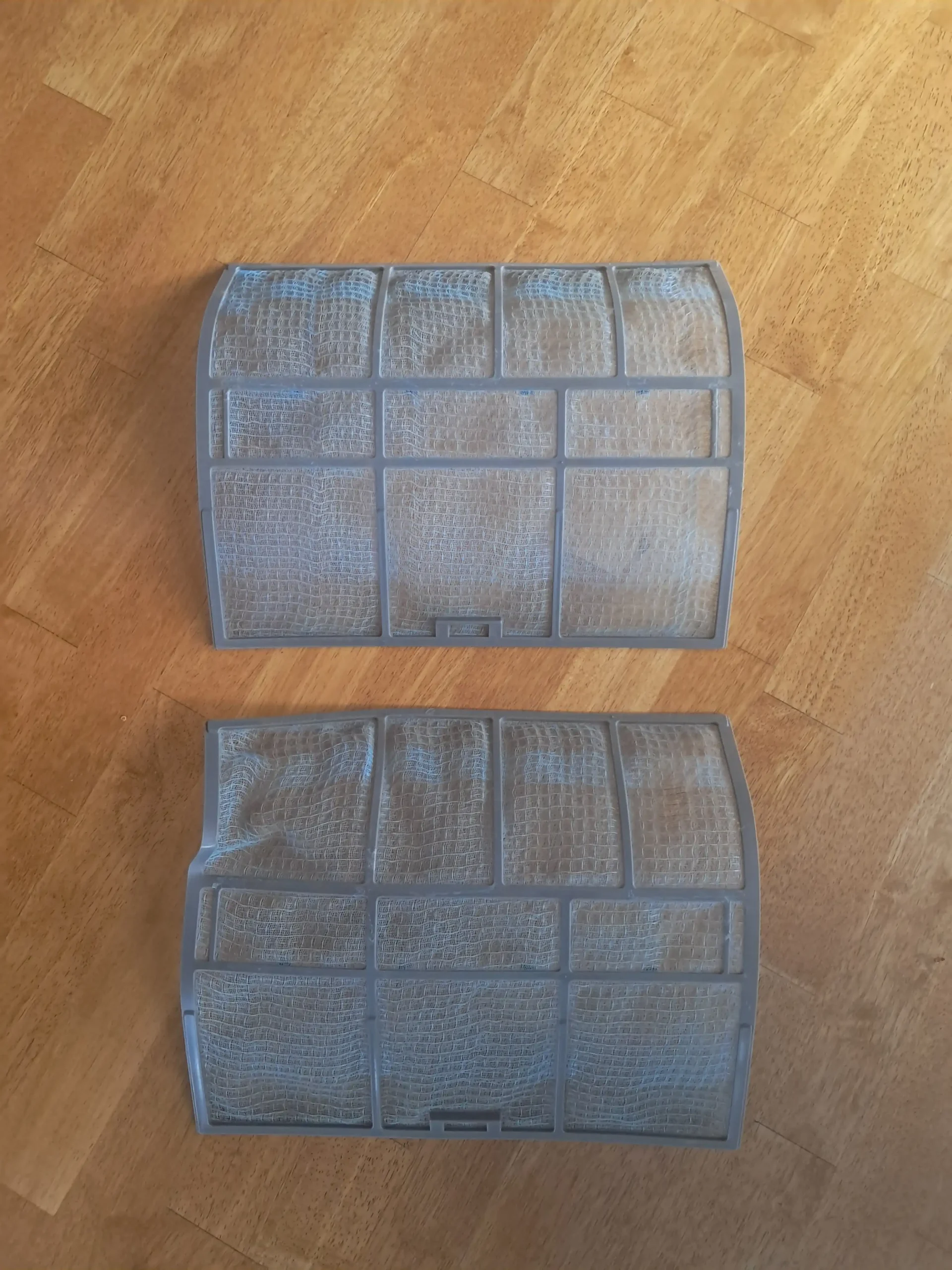 You can now slide them back into place.
You can now slide them back into place.
Once you start checking for this, you’ll be surprised how quickly they clog up.
Do this every month for better airflow, healthier air, and lower power bills.
Keep the Indoor Unit Dust-Free
You can also clean the other accessible parts of the indoor unit.
Since you’ve already taken out the filters you can get your vacuum into the unit, and clean visible dust and debris.
Don’t get aggressive with it, just around the vents and openings that you can find is more than enough.
This type of cleaning will remove all the gunk, dirt, and debris that is plaguing your system.
A regular cleaning is going to improve the effectiveness of your system and make it less prone to breakdown.
After you’ve done that, wipe down the outside of the casing with a cloth to make it look pretty.
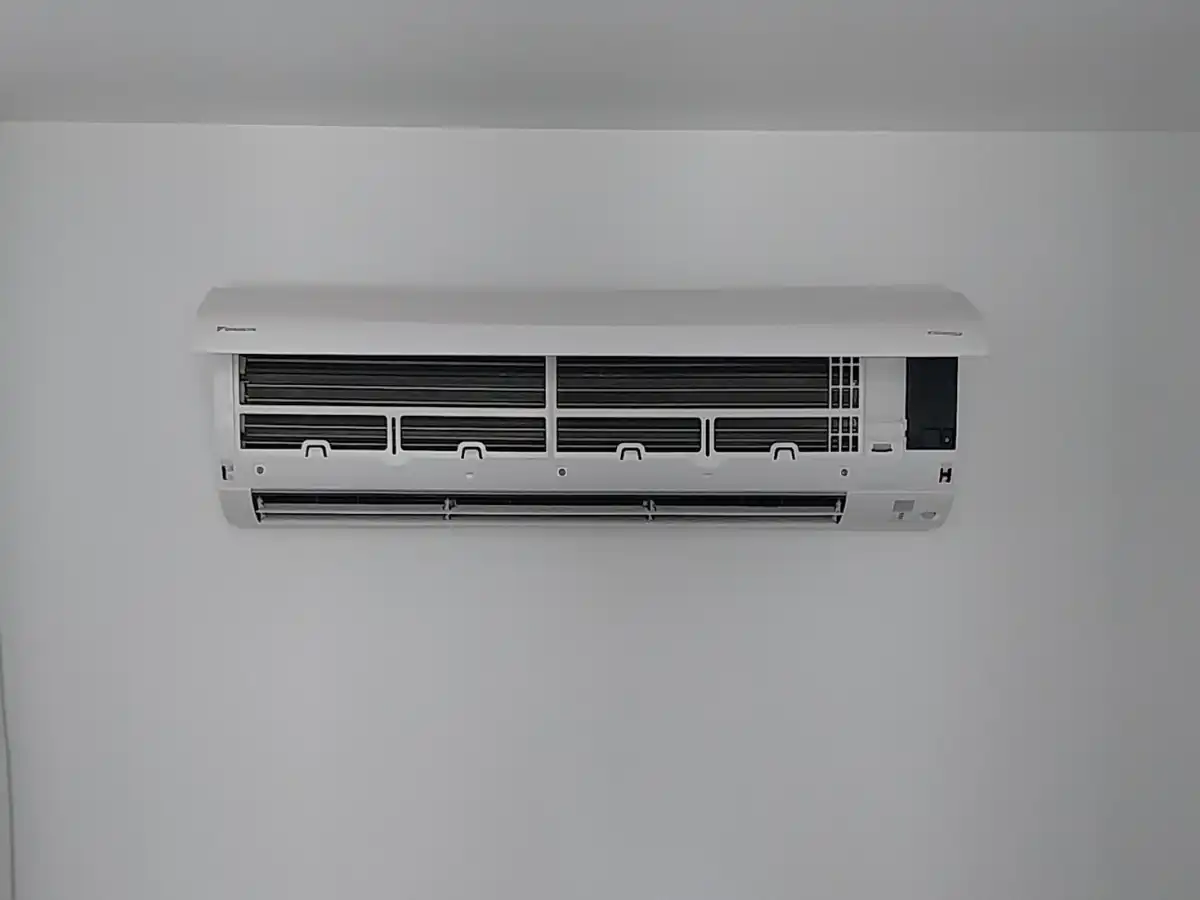 Avoid any sprays into the internal parts and don’t mess with the parts.
Avoid any sprays into the internal parts and don’t mess with the parts.
Check the Outdoor Unit and Clear Around It
If you haven’t checked your outdoor unit in a while, most likely it’s seen better days.
Analyse the area for any obstructions to the unit.
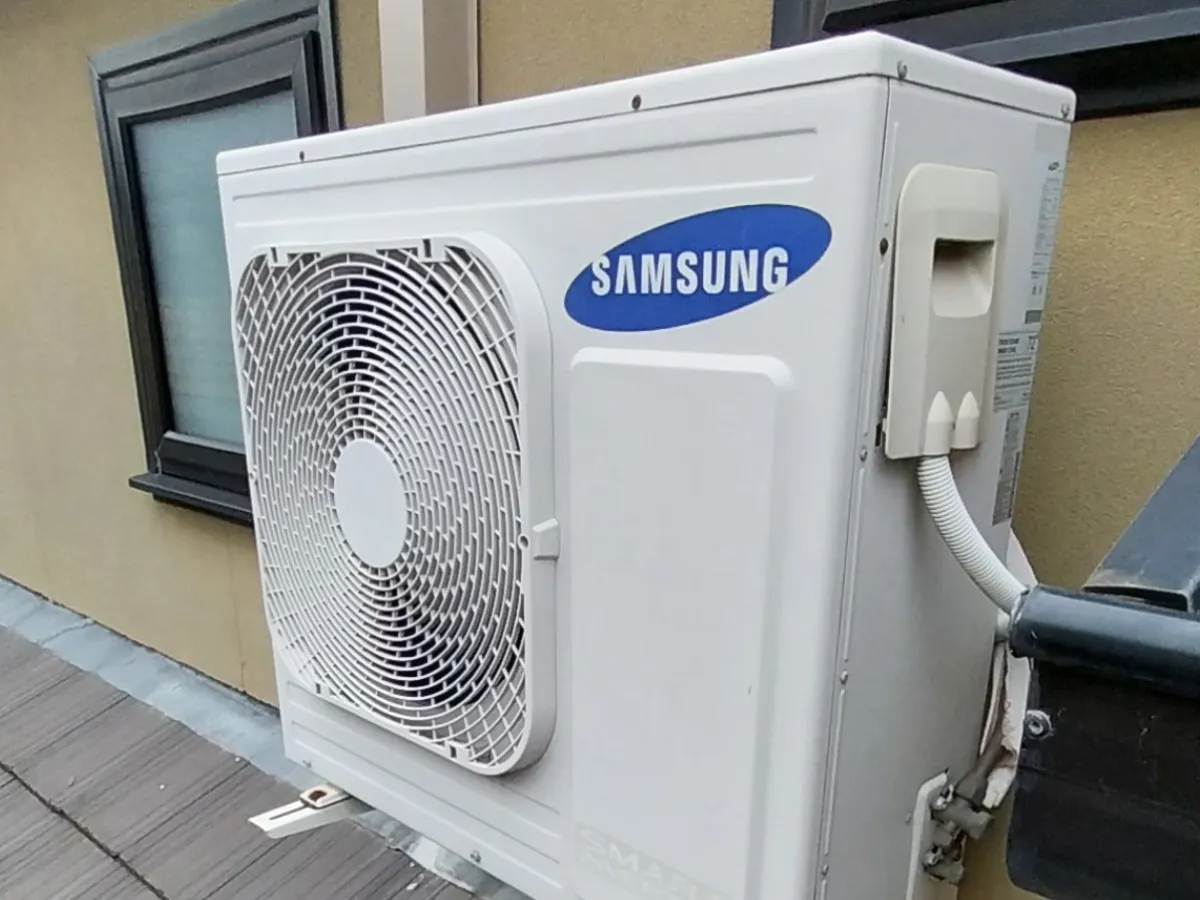 There needs to be clear space so that nothing is getting in the way of the unit.
There needs to be clear space so that nothing is getting in the way of the unit.
That means removing trees, branches, shrubs, and leaves that are blocking the unit.
This plant matter can get into the unit and damage components which may cause your system to malfunction.
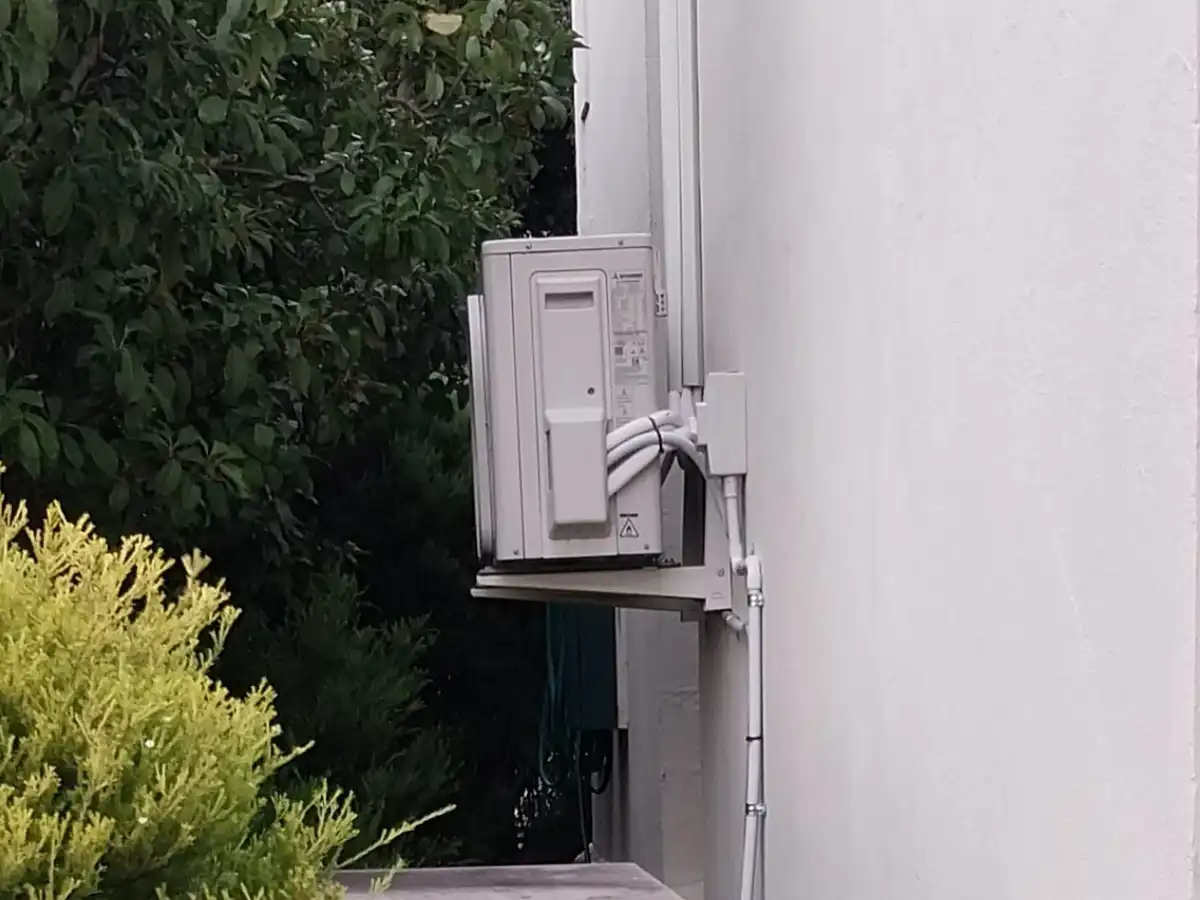 We suggest about 30cm of clearance on each side and 60 cm above.
We suggest about 30cm of clearance on each side and 60 cm above.
When installing a split system we take into account the surrounding elements to find the best possible location.
A study by Andriyanto Setyawan found that blockages to the outside unit can result in reductions in cooling capacity up to 46%.
Wipe the unit and remove any obvious obstructions, using a blower might help you clear the space better.
Use the Self-Cleaning or Dry Mode
Most homeowners aren’t aware of this function, as older split systems generally don’t have this.
If you have a newer model such as LG, Mitsubishi Electric, Daikin, Fujitsu, Panasonic and more, they likely do have a self cleaning or dry mode.
In this mode the evaporator or coil is dried up preventing the growth of mould and bacteria, which you obviously don’t want.
There is LG Auto Clean, Mitsubishi Clean Air Technology, Daikin Clean function and many more.
Turn this dry mode on for roughly 30 minutes, some have a set amount of time, and it can be very useful after those humid days where bacteria likes to thrive.
The best models sometimes have advanced filtration systems that deodorise, such as a high temperature sterilisation which is even better.
To find out if your system has this function, read the owners manual and for older models you may be able to find the details online.
Check for Drain or Coil Build-Up (Visually Only)
This is a great preventative tip for those seeking a little bit more assurance.
This is simply an inspection so don’t go playing around with any parts.
Go to the outside unit and look for any water pool or a slow drain of fluid, this can be a sign that something is wrong.
This could potentially indicate a refrigerant leak, or some other issue.
If this is the case, call a licenced professional.
You can also inspect the coil inside the indoor unit.
Check for dirt, mould and build up on the coil itself.
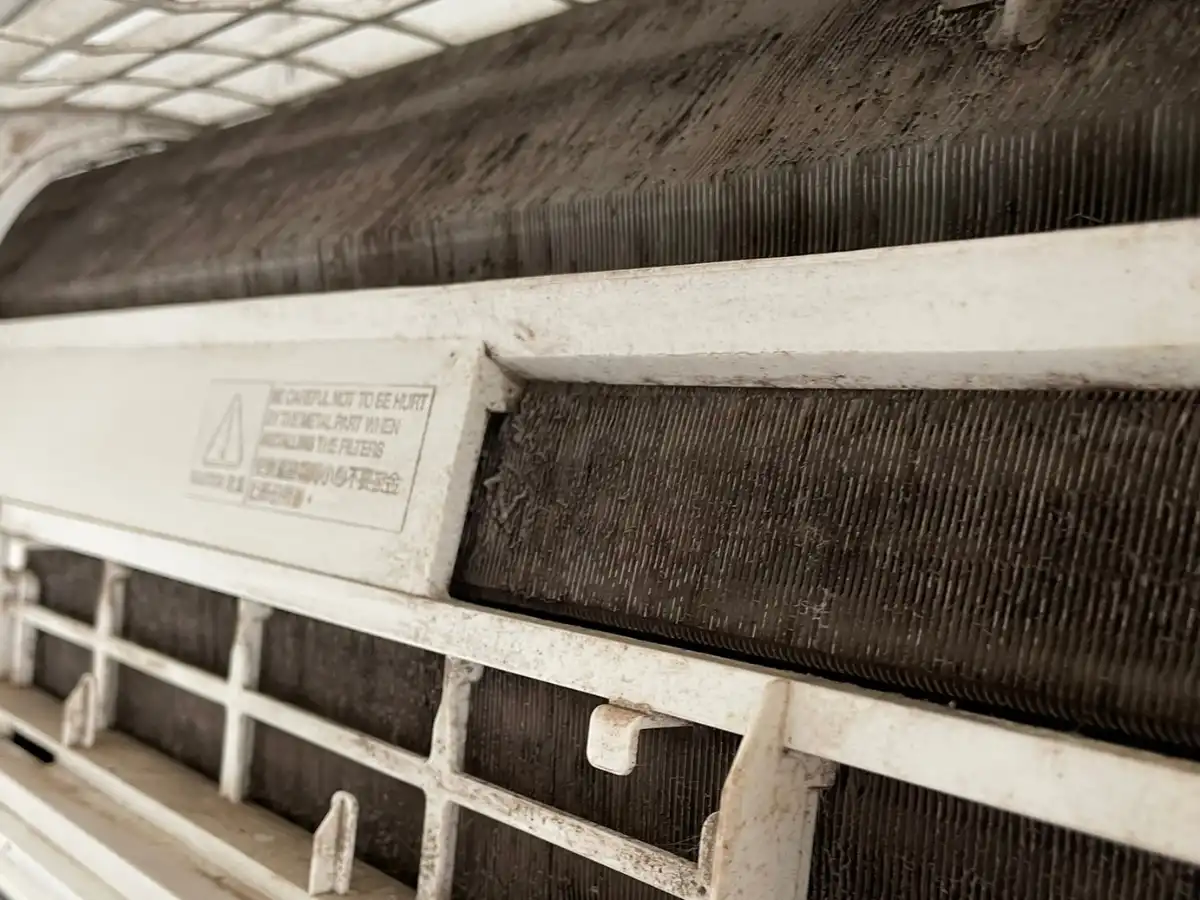 If this didn’t come off from a simple vacuum earlier then this requires a deep air conditioning clean.
If this didn’t come off from a simple vacuum earlier then this requires a deep air conditioning clean.
Don’t attempt this yourself, as a licenced professional is required for deep cleans.
Switch It Off When Not in Use
While you might use the split AC every day during summer, you might not during winter.
In cases where the system isn’t being used for longer than a week, it’s good to turn off the split system from the power supply.
When you turn off the system completely from the power supply you prevent any electricity draw and improves the overall health of the system.
Doing this will also save you a small amount on your electricity bill every year, especially if you go on holidays for an extended period of time each year.
Book a Professional Service Every Year
Your air conditioner is a mechanical system and needs proper tender, love and care.
If you want your split system to last decades, it’s going to need professional service regularly, more so the older it gets.
DIY maintenance is all well and good but nothing beats licenced inspection, fault detection, and efficiency testing.
When it comes to servicing your split system in Melbourne, once every 2 years will suffice.
For those who use it extensively all year round, we recommend once a year before summer.
Professional service includes inspection, testing, cleaning of all major and minor components in order to prevent expensive issues, improve effectiveness, and ensure longevity.
It’s like putting oil in your car, it’s a must.
Signs Your Split System Needs Attention
There are some clear signs that you should seek professional help
- Weak airflow
- Musty smells
- Loud rattles or buzzing
- Higher bills for same usage
- Water leaking from indoor unit
If you notice any of these, your system’s telling you it’s overdue for a clean or service.
Professional Air Conditioning Service With Thomas Air Conditioning
Being savvy with your split system or air conditioner can save you money and problems in the long term.
However there are things you can’t do, such as handle refrigerant, or play around with major components.
Refrigerant is a hazardous chemical that is only to be used by licenced HVAC technicians, that is the ARCtick licence, which all our heating and cooling experts possess.
Anything electrical, or innermost parts should be left to professionals.
Most likely you’re due for a split system service, don’t hold off on getting the right care for your air conditioner.Our team at Thomas Air Conditioning handle maintenance, cleaning, and repairs for air conditioning in Brighton, and split systems in Caulfield, as well as the greater Melbourne metropolitan.
